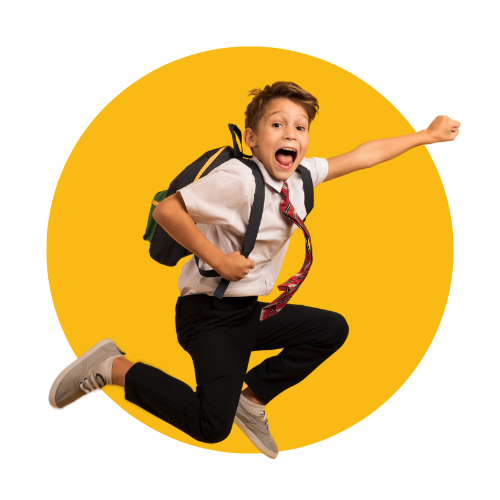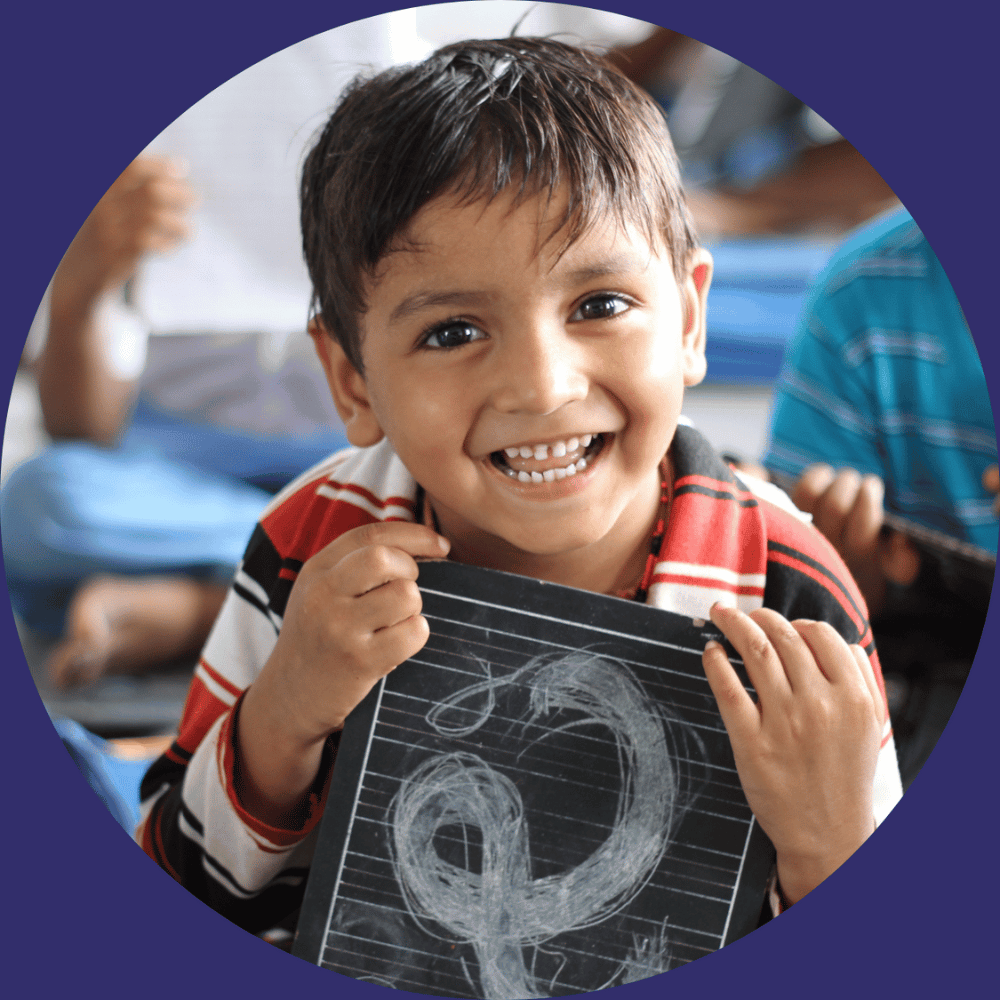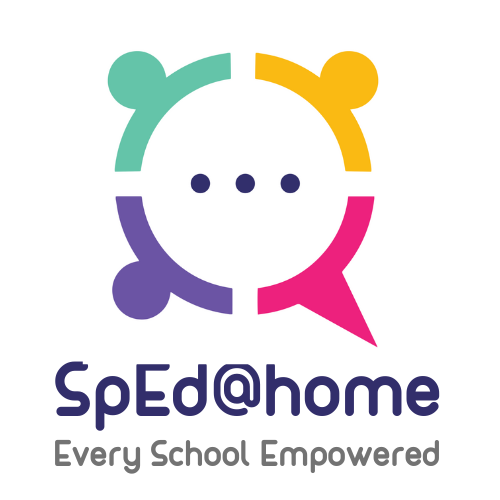Dysgraphia is characterized as a neurological disorder that compromises an individual’s ability to write. This is quite challenging for students as a large part of school and college work depends on being able to write assignments and exams. Children with Dysgraphia show signs of illegible handwriting and have prose often filled with spelling errors.
So, back to the question- What is the impact of Dysgraphia on children in a classroom?
Poor academic performance: Students with Dysgraphia often times show severe inability when forming letters and judging alignment of words and sentences. This leads to overwriting, poor spelling, and mixing sentence and capital case. All this leads to losing marks and poor academic performance.
Procrastination: Students with Dysgraphia tend to show a general avoidance of written assignments. While many a times this comes off as laziness, they feel incapable of being able to churn out good writing even though they may have the required intellect to be able to do so.
Emotional impact: For those students who are intelligent and understand all that is taught to them but have difficulty performing when faced with a written test or assignment, functioning aptly in classrooms can be emotionally draining. They find it hard to catch up with their peers thus making it hard for them to cultivate and sustain self-confidence when it comes to academia.
If you notice any of the above symptoms in any student in your classroom, refer them to a specialist. A timely assessment can help manage the condition and make writing a manageable task for those with Dysgraphia.
Traditional classrooms are slowly adopting strategies to accommodate the needs of children with learning disabilities. One of the most common learning disabilities is Dyslexia. If you are unsure about how to identify the symptoms of Dyslexia in a child, read on.
Dyslexia is typically described as a learning disorder that affects a child’s ability to read, write, and recognize the sounds of certain letters. Identifying Dyslexia at an early age can prove to be beneficial to the child as it becomes possible to start treatments early, allowing the child a head-start into managing their symptoms.
Observable signs and symptoms of Dyslexia in the classroom:
- Inconsistent spelling mistakes. A child may spell the same word differently throughout the day.
- Changes in the letter shape.
- Lack of concentration when reading. Omitting words when reading aloud.
- Trouble distinguishing similar letter sounds.
- A slower pace of learning words as compared to other students.
- Problems with recollection of recurring words.
- Trouble expressing thoughts clearly, verbally.
- Trouble pronouncing words.
The ones listed above are the most commonly observed signs of Dyslexia which impacts a child’s learning in a traditional classroom. Besides the trouble faced when learning, children with Dyslexia also display behavioral symptoms. Early intervention can help children with Dyslexia cope with and manage their symptoms. Behavioral signs of Dyslexia may include the following:
- Isolating from friends and classmates.
- Loss of interest in classwork and homework.
- Poor comprehension;
- Acting out in classrooms.
- Unable to sustain relationships with friends and family due to being unable to clearly express their discomfort.
The behavioral issues may reflect poorly on any student’s character. They may be deemed lazy and uninterested but by looking at these symptoms and understanding that these may be signs of a learning disorder can help these children get diagnosed in time.
Learning Disabilities (LD) are disorders that directly affect an individual’s ability to learn. This may show up in many ways like difficulty in reading, writing, and expressing themselves. However, learning disabilities are different from physical disabilities like vision or hearing impairment. Similarly, learning disability and intellectual disabilities are also not the same. There are several types of learning disabilities. Let’s understand learning disability and its different types below:
Dyslexia
Dyslexia is a learning disability that affects one’s reading skills. Children with Dyslexia find it difficult to identify sounds of certain letters, jumble up spelling, and find it hard to understand grammar.
Dysgraphia
Dysgraphia is a learning disability where a person finds it difficult to be able to write down their thoughts clearly. Children with Dysgraphia tend to have poor handwriting, have trouble writing coherent sentences, and omit words altogether. They also have trouble holding pen/pencils.
Dyscalculia
Dyscalculia refers to the learning disability where a child has trouble with math problems and calculations. For example, children with Dyscalculia may show signs of requiring a longer time to do basic calculations like counting, multiplication, addition, and subtractions. They also find it difficult to remember numbers and simple equations.
Non-Verbal Learning Disabilities
Non-verbal learning disabilities affect the brain’s right hemisphere. This leads to trouble while interpreting verbal response. Children with Non-verbal learning difficulties find it challenging to understand body language cues, lack co-ordination, and show problems in visual-spatial functions.
As listed above, there are various learning disabilities that impact a child’s ability to process and perform everyday actions. Identifying the signs of learning disabilities and early intervention can help the child manage their symptoms and perform better in inclusive or traditional classrooms.
Teachers play a very important role when it comes to iden tifying learning disabilities in students. Often, these signs are not very clear and it is common to label undiagnosed special needs children as naughty, or troublemakers. Read on to know the classic classroom issues of children with learning difficulties.
Avoiding attention to themselves
Children with special needs tend to stay away from the limelight. They try to hide from the teacher so that they can avoid being called by the teacher. If they have trouble understanding a concept in class, they seldom ask questions or seek clarity. This leads to slacking in school and homework. These behavioral traits lead them to be labelled as lazy, or troublemaker students.
Time management issues
Children with special needs find time management challenging. They find it difficult to organize and finish tasks like their peers. They end up taking longer than appropriate time when trying to complete daily actions. Tasks like tying their shoelace, buttoning their shirts etc. may take them a long time while simple classwork could take ages. They also find it hard to judge time they might need to get from one class to another and end up late.
Poor concentration
One of the most common classroom concerns when it comes to children withs special needs is their lack of focus. Easily mistaken for lack of effort, this could be a serious sign of learning disability in a child. Lack of concentration occurs due to issues with the part of the brain that stores information. When faced with multiple instructions, new information, and class work, children with special needs often seek solace in daydreaming.
Identifying these signs and early intervention can help children with special needs cope and manage their school work.
A learning disability diagnosis is a clear indicator that a child may not be able to learn in the same way as other students in the classroom. However, with inclusive education becoming the new norm, teachers are interacting a lot more with children with special needs.
There are several learning disability activity ideas and tools that can help a teacher empower a student with LD to cope in the classroom.
Be specific
When giving an assignment, general statements like ‘do well’ are not helpful for an LD child. Instead, create specific instructions for evaluation parameters. For instance, if it’s a math assignment, be clear on the aspects they will be judged on such as showing the work, writing the formula used etc. Also, post a copy of this on the school website or provide a printout of the instructions that a child (or parent) can refer to later.
Use media to illustrate content
Constant verbal or written instruction may be difficult for a student to follow in the classroom. Supplement your teaching with the use of visual aids such as charts, pictures, videos, graphics etc. Make them colourful, simple and organized. This will help a child with learning disability learn the material while also benefitting the rest of the class.
Break down instructions
Multiple directions at the same time can overwhelm a student with a learning disability. Instead, break down the instructions into simple steps and communicate them one at a time. One strategy that works is having the student repeat the instruction to ensure they have understood it. When it comes to instructions or behaviours that are required recurrently, print them out and put them up in the class. Check in with the student that they understand and remember these instructions.
Most classroom teaching can be adapted to help learning disability students in better understanding the subject matter. In case you are a teacher wondering when it comes to a learning disability, how to help? Make use of these strategies and more available online to improve the overall quality of work in the classroom.
One of the signs considered most healthy in a growing child is being active. However, when a child shows signs of very high activity, it can seem quite cumbersome to parents or be termed as lack of discipline in children. One of the first signs of ADHD is the inability of being able to sit down calmly when told. It also shows up as hyperactivity where the child shows symptoms of being too talkative, interrupting others, lack of focus, and hurried functioning throughout the day. So, how does a parent/teacher distinguish between a child with ADHD and a child showing lack of discipline? Read on to find out.
Hyperactivity in Children
Children show active bursts of energy followed by period of quiet. When told to settle down, children do so. Due to lack of discipline, children may display disobedience. However, hyperactivity may show in the following ways:
Constant movement
Kids with hyperactivity are perpetually seen moving, fidgeting, and restless. They find it hard to sit still and find comfort in constantly moving or fidgeting with things around them.
Too much talk
Children with hyperactivity are typically very talkative. They also show a tendency to interrupt or talk aver others who maybe talking. They are also known to interrupt teachers while in lectures. This behaviour is considered rude but more often than not is not in control of the child.
Seem hurried
It is commonplace for kids to be seen running around at a young age. However, hyperactive kids display signs of constantly being on the move. They also move around hurriedly and often bump into tables or other objects in their way. This hurried nature also leads to them bumping into people which may be inappropriate, however not in their immediate control.
If you notice the above symptoms in a child, recommend them to get tested for ADHD. Early diagnosis and timely intervention can help them with an early headstart and help them manage and cope with symptoms.
One of the most common neurodevelopmental disorders of childhood, the worldwide prevalence of ADHD in children is believed to be around 5.3%. It is also observed that ADHD in childhood is found more in boys than girls by a 3:1 ratio.
ADHD
Attention-Deficit/Hyperactivity Disorder better known as ADHD is one of the most prevalent disorders found in children. Typically, the symptoms of ADHD show in childhood and continue well into adulthood. With timely intervention by parents and teachers and behavioral therapy, children can better manage this condition. A study conducted in Coimbatore, India found ADHD in children at 11.3%, which is higher than the global number. Research shows that globally the number of boys with ADHD is higher than the number of girls.
Common ADHD behaviour
Typically, ADHD is characterized by symptoms like impulsiveness, hyperactivity, and lack of focus. Other common signs and symptoms of ADHD are as follows:
- Extremely fidgety and restless
- Impulsiveness
- Head in the clouds, daydreamers
- Impatient and restless while sitting
- Always in a hurry, often clumsy
- Talkative, bad listener
Diagnosing ADHD
When testing for ADHD, experts do not recommend one single test. It requires a series of tests which include medical exams, hearing and vision test, and behavioral history- all of which combined prove to be effective when understanding whether or not an individual has ADHD.
Even though behavioral disorders have a somewhat negative connotation, an ADHD diagnosis need not be feared. There are several treatment options that help individuals cope with and manage their ADHD symptoms. Therapy coupled with medication can help one arrest the symptoms and devise a strategy to overcome social hurdles caused by ADHD. Referring to a behavioral therapist can also prove to be very effective as identification and treatment at the early stages can truly help the student take ADHD in their stride and live a fulfilling life.
Typically, children with ADHD show behavioral traits like impulsiveness, hyperactivity, and lack of focus. These children also show poor performance in school and have learning difficulties. However, one of the biggest hurdles faced by children with ADHD is initiating and sustaining social relationships. This is known to have the most impact on their lives.
How are social skills impacted in children with ADHD?
Too impulsive
Kids displaying signs of ADHD are known to be impulsive and impatient when it comes to waiting in queues. They are bad listeners and are known to interrupt people while talking. This leads to people feeling disrespected or under-valued. They also find it difficult to share their things with other students making them look selfish or greedy.
Body language
Besides verbal communication body language plays are major role in social settings. Children with ADHD find it difficult to follow social cues in the form of body language and may not understand if they upset somebody.
Forgetful and unreliable
Children with ADHD show difficulty when trying to organize and remember tasks. They are forgetful, don’t show up for their friends, and often forget to do their bit when assigned any work. This makes them look careless and undependable. This leads to other students shunning them out of social groups or school activities requiring making groups.
It is important to understand that while these behavioral traits make students with ADHD seem careless and unreliable, the student is simply functioning on a neurological and biological condition. Therapy and interventional strategies help students hone their social skills and encourage budding social relationships. Children with ADHD
However, while these behaviours may appear as careless or unreliable, the student simply is unable to factor in the processes necessary to behave appropriately. ADHD therapy and interventional strategies can go a long way in helping students pay more attention and adapt better to social situations. Intervention by parents and teachers can help other students understand the behavioral tendencies of ADHD children. Behavioral therapists can devise strategies to help ADHD children have better social relationships.
When one’s child is diagnosed with a developmental disorder like ADHD it is very common for parents to think that it may be a result of something wrong with their parenting style.
Is ADHD a result of faulty parenting?
The answer is No, ADHD is not a result of faulty parenting. It is the brain’s inability to process things the usual way.
If you think you child may have ADHD or symptoms, click here to Book an Assessment.
Causes of ADHD
ADHD cannot be attributed to a single cause because of which, parents seem to think that it their discipline or lack thereof that has caused it. It is believed that certain genetic components and environmental factors lead to ADHD. While poor parenting can affect the behavior of the child, it cannot be counted as the root of ADHD.
Impact of bad parenting in ADHD
As established, faulty parenting doesn’t cause ADHD but it is definitely behind what makes it worse. While the neurological or biological concerns cannot be reversed through parenting, it is important to provide a healthy environment for the child at home. Lack of discipline in the form of too much screen time, leniency towards basic rules, poor nutrition and sleep, all could worsen ADHD symptoms.
Parenting techniques that are helpful
It should be noted that while bad parenting could worsen ADHD, good parenting should not be considered a way to cure it. ADHD is a neurological disorder that affects a child’s perception and enforcing good behaviors like encouraging them to set a routine, ensuring they consume wholesome and nutritious food, and making sure they get proper sleep- all help in controlling the symptoms of ADHD.
Seeking the help of a professional behavioral therapist can prove to be beneficial for the child as well as the parent as it can help both parties devise effective strategies to handle ADHD. In conclusion, while parental styles are not the cause of ADHD in children, it is imperative for parents to adopt positive patterns to help the child manage their condition in a much better manner.
ADHD- Attention Deficit/Hyperactivity Disorder
According to the DSM-V, ADHD is one of the most common neurodevelopmental childhood disorders. About 5.3% children are diagnosed with ADHD, worldwide. ADHD is also found to be more prevalent in boys than girls by a 3:1 ratio.
ADHD- Attention Deficit/Hyperactivity Disorder, is one of the most common learning disorders that start showing signs in early childhood. The symptoms that show up in children continue to exist well into adulthood. However, early identification of the same and consistent treatment, individuals can manage this condition in a healthy way. A study conducted in Coimbatore, India found that among the global estimate of ADHD cases, the highest prevalence is found between ages 9 and 10.
What are the common behaviours of ADHD?
There are several behavioral indicators of ADHD. Most common sign is that children are are classified as hyperactive. Other symptoms are as follows:
- Extreme restlessness
- Impulsiveness
- Daydreamer
- Forgetfulness
- Squirmish and restless when sitting
- Bumps into things and people
- Talking too much, interrupting conversation.
How is ADHD diagnosed?
Typically, ADHD cannot be diagnosed through one specific test. It generally requires a number of tests and consultation by experts. These tests include medical exams, audio-visual perception tests, as well as assessment of behavioral history. Bear in mind that ADHD diagnosis isn’t something to be afraid of. There are a host of treatment options available that make dealing with ADHD simple and manageable. Combining behavioural treatments and ADHD medication can help an individual fight the symptoms and function like any other member of the society.
If you or your child seem to be experiencing any of the above symptoms, do not hesitate to go into assessment. Book your free assessment at Sped@home today.







